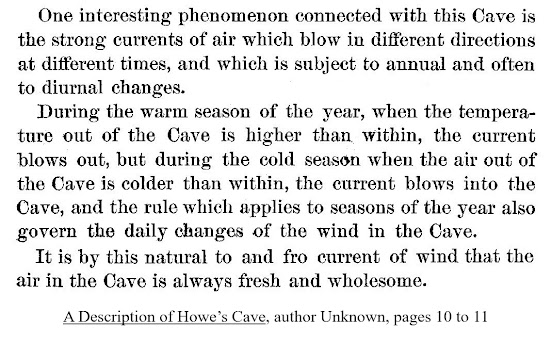Besides
the wilderness and all things survival, my two other great passions are history
and all-things-sharp and sword fighting.
And
now for something completely different, let’s talk about 19th
century swords-bayonets!
But just what model is it,
and who made it...?
The
word “yataghan” comes from the Turkish word for “one who lays down”,
which describes the downward re-curved blade, of this Turkic-origin sword.
The re-curve added strength and rigidity
to the blade, while keeping the hilt and point in alignment for maximum thrusting
efficiency and at the same time kept the blade point away from the line of the
muzzle bore, allowing for safer reloading of muzzle loading rifles.
But
unfortunately, this doesn’t help us to identify this sword-bayonet, as the first
yataghan sword-bayonet, the M1840 French Chassepot Bayonet (which was designed
to fit the French M1866 Chassepot Rifled Infantry Musket) was one of the most
widely copied designs of all the sword-bayonets. During the 19th century, the United
States, Egypt, Belgium, and Argentina all manufactured or used this type of
bayonet.
Since,
it is a common blade type and there’s not a maker’s mark stamped on the blade, we
are going to have to compare the brass hilt to pictures of other sword bayonets
from around 1862 and to limit the search to something approaching reasonable, I
started by assuming that this sword-bayonet is a relict of American Civil War
and was made by the Union side.
The bayonet I purchased has 14 ribs on the grip, and it doesn’t have a steel rivet through the center of the cross into the blade. Also, it has a lug slot that is chamfered on both sides, with the stop end is squared, and it has no guide slot. Additionally, it has the number 10156 stamped vertically into the flat of the hilt. Interestingly, the “2” in 1862, stamped on the blade, is equally as blurry on my blade as it is on the #203 reference blade from “US Brass Hilted Sword Bayonets”.
So,
the mystery is solved, I found a M1841 Rifle Sword-Bayonet, manufactured in
1862, by Collins & Co., but just how did its original user, use it as a
sword or as a bayonet? That will have to
be a mystery for next week!
I hope that you enjoy learning from this resource! To help me to continue to provide valuable free content, please consider showing your appreciation by leaving a donation HERE. Thank you and Happy Trails!
I
hope that you continue to enjoy The Woodsman’s Journal Online and look for me
on YouTube at BandanaMan Productions for other related videos, HERE. Don’t forget to follow me on both The
Woodsman’s Journal Online, HERE,
and subscribe to BandanaMan Productions on YouTube. If you have questions, as always, feel free
to leave a comment on either site. I
announce new articles on Facebook at Eric Reynolds, on Instagram at
bandanamanaproductions, and on VK at Eric Reynolds, so watch for me.
That
is all for now, and as always, until next time, Happy Trails!
Sources
Bennett, Julian; “Bayonets for the Peabody-Martini Rifle”, Arms
& Armour, Vol. 16, No. 1, pages 75 to 104, https://repository.bilkent.edu.tr/server/api/core/bitstreams/3ea5e93b-803b-4b7b-9751-3861eb721d37/content,
accessed September 28, 2024
Green, Lieut., William
Pringle; Instructions for Training a Ship's Crew to the use of Arms, 1812,
[Academy of Historical Fencing], https://swordfight.uk/wp-content/uploads/2019/11/Instructions-for-training-a-ships-crew-in-the-use-of-arms-in-attack-and-defence-by-Lieutenant-William-Pringle-Green-1812.pdf,
accessed September 28, 2024
Marey-Monge, Colonel
Guillaume Stanislaus; Memoir on Swords, Etc., [John Weale, London,
1860], https://books.google.com/books?id=uLKxWGd4xt8C&pg=PR7&dq=%22yataghan+in+the+tower+armoury%22&hl=en&newbks=1&newbks_redir=0&sa=X&ved=2ahUKEwi17Jv98OWIAxU-FFkFHeV8IU8Q6AF6BAgKEAI#v=onepage&q=%22yataghan%20in%20the%20tower%20armoury%22&f=false,
accessed September 28, 2024
Wikimedia; “Bayonet
charge on Plateau of Touvent by French colonial Zouave troops from North Africa”,
June 19, 1915, by L'Illustration No 3772, https://commons.wikimedia.org/wiki/File:Bayonet_charge_on_Plateau_of_Touvent_by_French_colonial_Zouave_troops_from_North_Africa_1915.jpg,
accessed September 28, 2024
Wikipedia, “M1841
Mississippi Rifle”, https://en.wikipedia.org/wiki/M1841_Mississippi_rifle,
accessed September 28, 2024
Wilson,
Ronnie; “US Brass Hilted Sword Bayonets”, https://sites.google.com/view/us-brass-hilted-sword-bayonets/home?authuser=0,
accessed September 28, 2024
Worldbayonets.com—The
Collector's Edge Online Bayonet Reference; “Bayonets of France”, https://worldbayonets.com/Bayonet_Identification_Guide/France/france_2.html,
accessed September 28, 2024






.jpg)





























